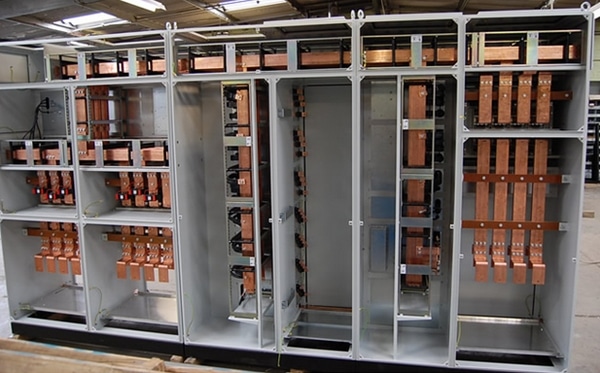Within the intricate landscape of manufacturing, where precision, efficiency, and reliability reign supreme, the symbiotic relationship between Bus Bars and Insulators emerges as a linchpin for ensuring optimal electrical conduction, safety, and operational resilience. This deep dive into their interplay offers a comprehensive understanding of their roles, specifications, and significance within manufacturing processes, catering to industries seeking to elevate their electrical systems to unprecedented levels of performance and reliability.
The Crucial Role of Bus Bars in Manufacturing
Bus Bars, the stalwarts of electrical conduction, serve as the backbone of power distribution systems within manufacturing setups. Crafted from high-conductivity materials like copper or aluminum, these robust conductors facilitate the efficient transmission of electrical currents across diverse machinery and equipment, ensuring seamless operations and minimal power loss.
Bus Bars’ Structural Excellence
The structural design of Bus Bars, featuring a combination of width, thickness, and cross-sectional geometry, directly impacts their conductivity and current-carrying capacities. For instance, a wider surface area allows for more effective heat dissipation and reduced resistance, enhancing the overall efficiency of power distribution in manufacturing environments.
The Pivotal Role of Insulators in Electrical Isolation
Insulators, often overlooked yet indispensable components, play a crucial role in electrical systems by preventing electrical current from passing through unwanted pathways. These dielectric materials, ranging from ceramics to polymers, create a barrier that isolates conductive materials, ensuring safety, preventing short circuits, and maintaining the integrity of electrical circuits.
Insulators’ Dielectric Strength
The dielectric strength of insulators determines their ability to withstand electrical stress without breaking down. High dielectric strength insulators ensure optimal electrical isolation, especially in high-voltage environments within manufacturing setups, preventing electrical leakage and ensuring safe and reliable operations.
Bus Bars and Insulators in Manufacturing: Applications and Specifications
Heavy Machinery and Power Distribution
In manufacturing plants operating heavy machinery, Bus Bars serve as primary conduits for distributing power. Insulators strategically placed along Bus Bars prevent inadvertent contact, ensuring safety and preventing short circuits or electrical hazards.
Circuit Boards and Precision Electronics
In precision electronics manufacturing, where compactness and intricate designs prevail, Bus Bars coupled with insulators play a pivotal role. Insulators provide electrical isolation, safeguarding delicate components against unwanted electrical interference.
Measurement Data and Specifications for Optimal Performance
Conductivity Metrics and Performance Data
Quantifying Bus Bars’ conductivity involves metrics such as electrical resistance, measured in ohms. Lower resistance signifies higher conductivity, ensuring efficient power transmission. Additionally, insulators’ dielectric strength is measured in volts per unit of thickness, indicating their ability to withstand electrical stress.
Dimensional Specifications and Design Considerations
Bus Bars’ dimensions, including width, thickness, and length, are critical factors determining their current-carrying capacities and heat dissipation capabilities. Similarly, insulators’ thickness and material properties are paramount for maintaining safe electrical isolation.
Optimization Strategies for Enhanced Performance
Temperature Regulation and Thermal Management
Implementing thermal management strategies, such as heat sinks or insulation around Bus Bars, prevents overheating and ensures consistent performance. Insulators with high-temperature resistance further bolster the reliability of electrical systems in manufacturing environments prone to temperature fluctuations.
Material Selection and Application-Specific Insulation
Choosing insulators tailored for specific applications, considering factors like temperature resilience and compatibility with manufacturing processes, ensures optimal electrical isolation. Similarly, selecting Bus Bars crafted from high-conductivity materials optimized for manufacturing environments enhances efficiency and reliability.
Conclusion: Forging Manufacturing Excellence with Bus Bars and Insulators
In the realm of manufacturing, where precision, efficiency, and safety converge, the strategic integration of Bus Bars and Insulators embodies a paradigm of excellence. Their harmonious interplay, optimized dimensions, material specifications, and precise application ensure seamless power distribution, electrical isolation, and safety within manufacturing environments.
Future-Proofing Electrical Systems in Manufacturing
As manufacturing technologies evolve, the synergy between Bus Bars and Insulators continues to drive innovation. Advancements in materials, design techniques, and manufacturing processes will further enhance their capabilities, ensuring manufacturing plants remain at the forefront of efficiency, reliability, and safety.
Elevating Manufacturing Systems with Bus Bars and Insulators
The comprehensive understanding of Bus Bars’ conductivity, dimensions, and insulators’ dielectric properties paves the way for elevated performance and safety within manufacturing setups. Their strategic integration not only optimizes power distribution but also fortifies electrical systems against potential hazards, ensuring uninterrupted operations and longevity.

